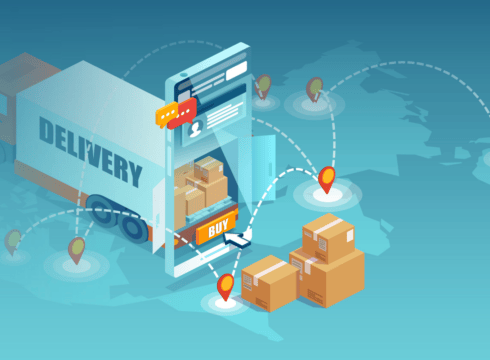For ecommerce, 2022 was the year of dispersed effect of changing customer behaviour, inflation control strategies, flexibility, and resource collaboration
This year will see the next phase of ecommerce, one that keeps pace with digital adoption rates, price fluctuations, tech progress, and competitive pressure
The future points to market saturation including a surge of GenZ consumers who prioritise quick checkout, payment ease, and social commerce
Inc42 Daily Brief
Stay Ahead With Daily News & Analysis on India’s Tech & Startup Economy
2022 was a year of duality for the ecommerce industry. With the rapid expansion of D2C brands and their customer-binding ethos, the sector has counterbalanced the resumption of in-store shopping, alongside an increased focus on omnichannel and social commerce. Data seems to favour the continued growth of ecommerce retail with global sales predicted to reach the $6 Tn mark in 2024.
However, this progress comes against the backdrop of the Russia-Ukraine war. With rising inflation, the IMF in October estimated a receding growth rate of 2.7% for 2023.
Shrinking investments by the government and venture capitalists along with dipping valuation multiples from 8-10x revenue in 2021 to 3-5x in 2022 have impacted business escalation. Moreover, the steeply rising cost of acquiring customers has propelled brands to shift toward customer retention and purposive branding.
Therefore, 2022 was the year of dispersed effect of changing customer behaviour, inflation control strategies, flexibility, and resource collaboration. Let‘s see what awaits the industry in the upcoming year.
Customer Retention Becomes the Priority
The first key trend influencing the fate of ecommerce brands is their ability to retain customers. With the presence of 24 Mn ecommerce businesses, seven out of ten customers are exercising their freedom of choice by increasingly seeking out competitors.
Dismal returns on ad spend have made customer acquisition far costlier in 2022, which will only increase in the coming years with the introduction of cookieless advertising and changing policies of Google and Apple. Customer retention naturally has become a priority.
To become a resilient ecommerce company, brand owners must build the loyalty loop with a greater focus on personalisation, customer engagement, and brand building. Opting for personalised communication while respecting customer privacy, customised returns solutions, and sharing brand values to attract like-minded customers is a good way to start the journey, as done by Puma, Nykaa, and United Colors of Benetton.
Say Yes To Social Commerce And Interactive Shopping
China and the U.S. have shed light on how ecommerce retailers can successfully use social media to convert leads and grow sales. The answer is social commerce and interactive shopping. Brands like H&M, Sugar, and Meesho are deeply engaging with consumers, propelling brand marketing, and selling their products directly on the platform.
The trend of live streaming by influencers to showcase products, answer customer queries, and entice users to purchase in real-time aka interactive shopping is gaining traction. With players like Walmart and Amazon joining the bandwagon, SMBs are experimenting with social media like TikTok and Instagram as added revenue sources.
Omnichannel Retail Is Back On Course
Gone are the days of complete dependency on online shopping with retail projections showing $15.21 Tn in sales by 2025. With mounting competition from brick-and-mortar stores, the key trend going forward is omnichannel retail.
Replicating the in-store shopping experience and combining it with the ease of online shopping and payments, omnichannel grips all the touchpoints in the customer journey.
It opens newer opportunities for sales, especially for D2C brands. CaratLane rose to popularity by strengthening its customer experience in an omnichannel way — melding physical store purchases with a try-at-home initiative.
Continued Popularity Of Hyperlocal Deliveries
Indian consumers prefer hyperlocal deliveries from local brands for their groceries, produce, medicines, and other FMCG products. It capitalises on customers’ expectations for instant gratification and uses innovative technologies like blockchain to simplify logistics.
Couriers like Dunzo and Shadowfax have done away with the constraints of warehousing and returns with their hyperlocal delivery mechanism. The future of hyperlocal is getting brighter, as the market is expected to surpass $5 Bn by 2025.
Technology To Augment Logistics And Operations
The next trend in disrupting traditional logistics operations alludes to technological advancements — blockchain, augmented reality, artificial intelligence, and machine learning. 35% of global consumers use voice recognition devices like Amazon’s Alexa and Google Assistant for online shopping. According to a study, AI can increase logistics productivity by 40% by 2035 with innovations like ARIMA (a forecasting algorithm).
Big data and AI enables businesses and suppliers to predict, prepare and solve supply chain disruptions. SaaS companies like IBM, Oracle, and SAP resorting to data analytics, data mining, blockchain, and APIs showcase the prominence of these technologies in optimising logistical processes like tracking, EDD predictions, route optimisation, product building, etc.
Drive Towards Climate Consciousness
With SDG 13 (Sustainable Development Goals) aiming to combat climate change, there is a globally rising consciousness for sustainability and reduced carbon footprint among consumers. Consumers accept and support brands that are climate conscious and carbon-neutral. One in two online shoppers agrees to shell out extra for sustainable drives like carbon offsetting.
Brands like Apple have already pledged to be carbon neutral by 2030. SMBs and D2C brands like Neemans and MamaEarth are shifting towards sustainability with zero-waste packaging and ethical material procurement.
Conclusion
These trends point towards the next phase of ecommerce, one that keeps pace with digital adoption rates, price fluctuations, tech progress, and competitive pressure. The future points to market saturation including a surge of GenZ consumers who prioritise quick checkout, payment ease, and social commerce.
To combat rising inflation and deliver customer value, ecommerce companies should be conscious of customer retention, interactive shopping, and tech adaptation for long-term profitability over short-term revenue growth.
{{#name}}{{name}}{{/name}}{{^name}}-{{/name}}
{{#description}}{{description}}...{{/description}}{{^description}}-{{/description}}
Note: We at Inc42 take our ethics very seriously. More information about it can be found here.


